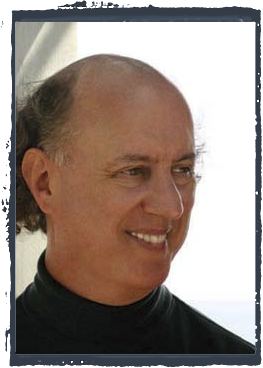A “Halloween Hoot” party in the yard at our son’s elementary school was grossly too loud; and still too loud two blocks away(!) as I walked home. This led me to research and write this noise policy. The Board of the school adopted it; but at the second Halloween Hoot after adoption, the noise was back. Sound and its dangers aren’t real to most people; that’s why noise is “the last pollution frontier.”
School Noise Policy
Because we know that noise can harm our children and damage their hearing—
We will protect our children from any sound that forces people at normal conversational distances to shout to be heard, and
Our curriculum will include information about how noise can cause damage and how to protect oneself against it.
Background
I have been bothered by how loud certain school functions are, and worried that they might damage our children’s hearing. Since the Halloween Hoot, I’ve spoken with half a dozen experts from universities and the U.S. Government, and summarize here what I learned from them. One thing is clear: If you must yell to be heard, your ears aren’t safe.
I learned that once hearing is damaged, it cannot be fixed; and that damage can occur without pain. About 10 million people in America have hearing losses due at least partly to loud noise; yet this type of loss can be completely prevented, sometimes even with the cheap foam earplugs sold at drugstores.
Hearing loss is so harmful and yet so preventable that experts recommend a comprehensive program of education directed toward school-age children. Children should learn that the first sign of damage is usually difficulty in understanding speech, such as mistaking “s” for “f”; for instance, confusing “fox” and “socks.” We all have this problem on the telephone sometimes, because of limitations of the phone system. But a person who has it in face-to-face conversations, and not just sometimes but routinely, may have hearing damage and should consult a doctor or audiologist.
Hearing loss from too much loud noise is called “noise-induced hearing loss,” or NIHL. A booklet from the National Institutes of Health tells what experts have to say about it. They say that a sound may be hazardous if while exposed to it you have difficulty in conversing (which I certainly had during the Hoot), or if afterwards you have ringing in the ear or notice that other sounds seem muffled. The experts say that if you can’t avoid such loud sounds, you should use ear protection.
Noise also has bad effects apart from hearing loss. It can raise adrenalin levels, disturb sleep, and cause anxiety. And the hearing loss, because it makes speech harder to understand, may itself cause the afflicted person to feel fatigue, anxiety, and stress. Because these feelings are unpleasant, the affected person may avoid them by participating less in various social activities, which in turn can affect friends and family members.
I told the experts that the Halloween Hoot was still loud two blocks away. I told them that while I was still at the Hoot and standing about 30 feet from the loudspeakers, I had to yell to be heard in conversing with a person just a couple of feet away.
I estimated the sound level where I was standing at 95 decibels (dB). (I did not have a meter with me, but I taught estimation of dB levels in my Caltech course.) One expert, Kenneth Fieth of the Environmental Protection Agency (EPA), said that, in his judgment, children exposed to 95 decibels for more than 2 hours may well suffer some permanent loss. (Remember that 95 was my estimate, not a measurement.) He added that where he lives in Maryland, schools have restricted levels at dances to 85 dB (in the loudest place in the room).
On the other hand, W. Dixon Ward, of the University of Minnesota Center for Communication Disorders, thought that the Hoot was unlikely to have caused permanent loss, but agrees that if you have to yell to be heard, that’s not a good thing.
Long ago I heard a talk by Harvard Professor von Bekesy, who won a Nobel prize for his work on the ear. He said that in his opinion, continued exposure to any sound louder than ordinary conversation caused permanent damage to the ear.
There are two reasons for the lack of perfect agreement among the experts. First, people’s sensitivity varies. Second, for ethical reasons, one can’t carry out the tests that would show definitely how much damage is caused by how much noise.
One thing however was agreed upon by everyone: If you have to yell to be heard, your ears aren’t safe.
Sources: I conducted many hours of phone interviews with various experts. The booklet I mention was Noise and Hearing Loss, Consensus Statement of National Institutes of Health (1990), formerly available from the Office of Medical Applications of Research, National Institutes of Health, Building 1, Room 260, Bethesda, MD 20892.
Technical note: An inexpensive “Sound Level Meter” lets a child or adult learn a lot about sound levels quickly and enjoyably. Analog display is more useful than digital. Radio Shack no longer sells theirs, but this Extech looks similar.
Guide to decibels: Ordinary conversation is about 65 or 70 decibels at a listener’s ears. When the sound gets 10 dB louder, it seems about twice as loud; decrease it by 10 dB and it sounds about half as loud. Federal standards allow workers to be exposed to 90 dB for 8 hours per day, or 100 dB for 2 hours per day. Continued exposure to 75 dB is unlikely to harm anyone (says the booklet), but continued exposure to sound above 85 dB cannot be guaranteed harmless, while at 120 dB even one instant of sound may cause permanent damage. Those wanting more information about decibel measurements can read an introduction I wrote for my Caltech students.
